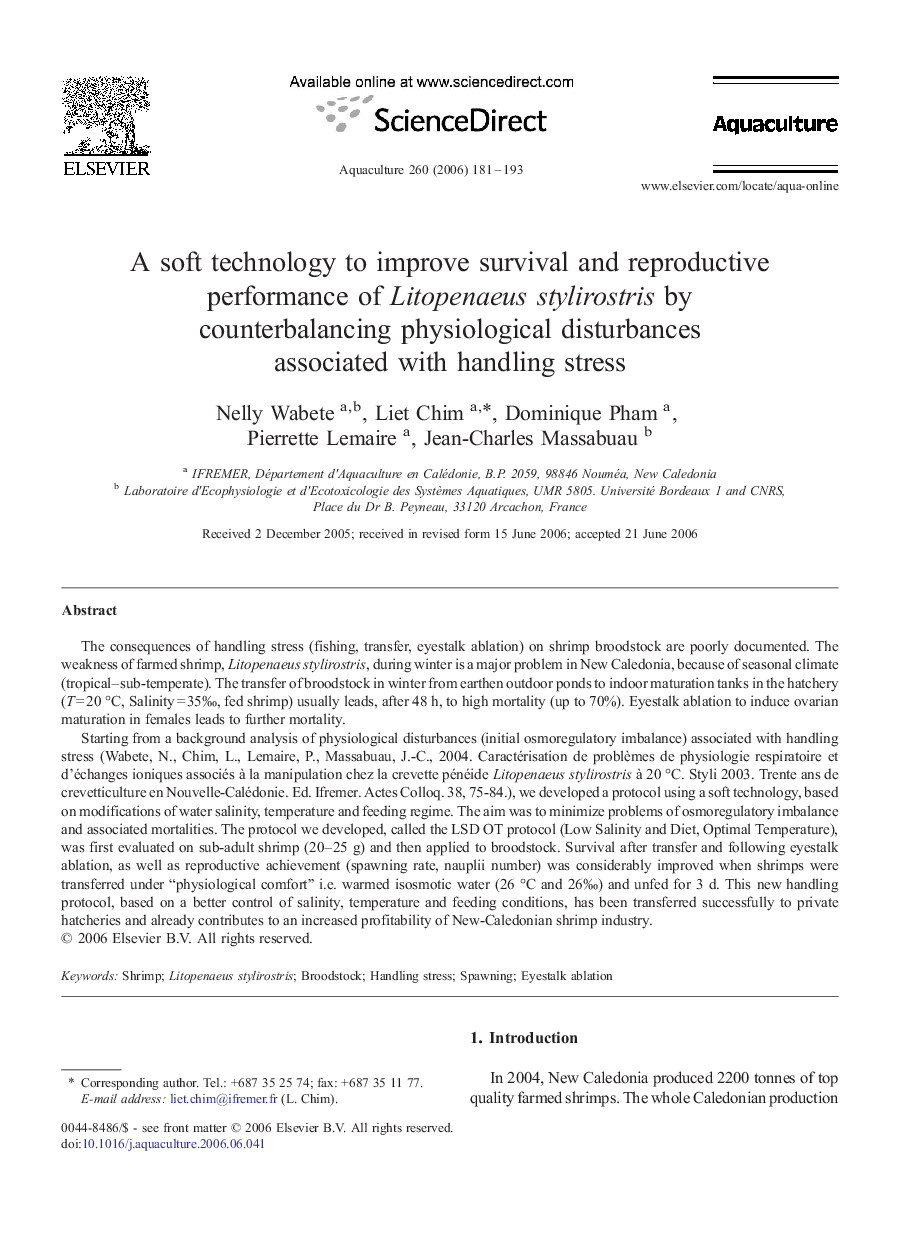| کد مقاله | کد نشریه | سال انتشار | مقاله انگلیسی | نسخه تمام متن |
|---|---|---|---|---|
| 2425668 | 1552981 | 2006 | 13 صفحه PDF | دانلود رایگان |

The consequences of handling stress (fishing, transfer, eyestalk ablation) on shrimp broodstock are poorly documented. The weakness of farmed shrimp, Litopenaeus stylirostris, during winter is a major problem in New Caledonia, because of seasonal climate (tropical–sub-temperate). The transfer of broodstock in winter from earthen outdoor ponds to indoor maturation tanks in the hatchery (T = 20 °C, Salinity = 35‰, fed shrimp) usually leads, after 48 h, to high mortality (up to 70%). Eyestalk ablation to induce ovarian maturation in females leads to further mortality.Starting from a background analysis of physiological disturbances (initial osmoregulatory imbalance) associated with handling stress (Wabete, N., Chim, L., Lemaire, P., Massabuau, J.-C., 2004. Caractérisation de problèmes de physiologie respiratoire et d'échanges ioniques associés à la manipulation chez la crevette pénéide Litopenaeus stylirostris à 20 °C. Styli 2003. Trente ans de crevetticulture en Nouvelle-Calédonie. Ed. Ifremer. Actes Colloq. 38, 75-84.), we developed a protocol using a soft technology, based on modifications of water salinity, temperature and feeding regime. The aim was to minimize problems of osmoregulatory imbalance and associated mortalities. The protocol we developed, called the LSD OT protocol (Low Salinity and Diet, Optimal Temperature), was first evaluated on sub-adult shrimp (20–25 g) and then applied to broodstock. Survival after transfer and following eyestalk ablation, as well as reproductive achievement (spawning rate, nauplii number) was considerably improved when shrimps were transferred under “physiological comfort” i.e. warmed isosmotic water (26 °C and 26‰) and unfed for 3 d. This new handling protocol, based on a better control of salinity, temperature and feeding conditions, has been transferred successfully to private hatcheries and already contributes to an increased profitability of New-Caledonian shrimp industry.
Journal: Aquaculture - Volume 260, Issues 1–4, 29 September 2006, Pages 181–193